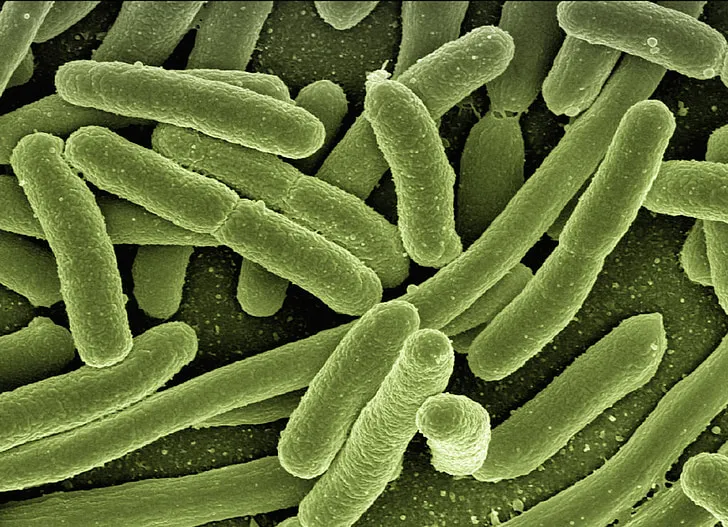5 Disadvantages of Coal Energy Explained
Disadvantages of coal energy are; non-renewable consumption, mining-induced soil and water pollution, habitat destruction, and unfavorable health effects.
This article discusses the disadvantages of coal energy, as follows;
1). Non-Renewable Consumption (as one of the Disadvantages of Coal Energy)
Coal is formed by the burial, accumulation, anoxic preservation and thermal conversion of plant biomass, and it is non-renewable because of the long periods of time (millions of years) required for the coal formation cycle to be completed [4].
This means that unlike renewable energy forms like wind, solar, hydro and geothermal, which are replenished instantaneously, coal energy is not easily replenished, so that extensive use of this energy resource goes along with the risk of absolute resource depletion..
The non-renewable attribute of coal energy places it in the same category as other forms and types of non renewable energy like energy from petroleum, natural gas, and nuclear fuel.
These energy forms are at a huge disadvantage by being unreliable for long-term use. It implies that coal energy is not a favorable choice especially when it is evaluated within the contexts of sustainable development, green economy, energy transition and decarbonization; all of which are very essential to ensure the long-term survival of life on Earth.
2). Mining-induced Soil and Water Pollution
Coal mining is a cause of soil pollution, especially within the vicinity of the mine site [6].
Waste from the mining process can easily contaminate soil and water within the environs, causing their degradation.
Such degradation can be referred to as acid-mine drainage when it severely affects water, due to the drastic increase in acidity that tends to occur [5].
Aside pollution, coal mining equipment can also cause significant mechanical disturbance, displacement of soil, and changes in land morphology with the digging of pits and trenches.
Unless intensive environmental remediation efforts are made, these changes can reduce the value and usability of land resources significantly, even years after mining activities have ceased.
Pollution in the process of coal energy development can negatively impact the soil and aquatic ecosystems respectively, reducing the distribution of oxygen and nutrients, and as such the chances of organic survival.
Environmental impacts of mining aside soil and water pollution include erosion, deforestation, and air pollution, which is discussed below.

3). Air Pollution (as one of the Disadvantages of Coal Energy)
Coal affects the air by releasing combustion byproducts like particulate matter, mercury, nitrous oxides, sulfur dioxide and volatile organic compounds that can effectively reduce air quality [1].
This implies that the effects of coal on air include regional heating by greenhouse emission, and pollution.
By polluting the air, coal energy development increases the risk of various health problems.

4). Habitat Destruction
Coal is destructive to the environment through its role in soil, air and water degradation, as well as habitat loss.
The kind of mining that causes the most habitat destruction is surface mining, because it usually involves extensive deforestation, soil disturbance, and water pollution.
Coal energy therefore affects local wildlife in terrestrial and aquatic habitats by altering the natural stability of these habitats. In the case of forests and other vegetated biomes, the removal of trees and pollution of soil can affect oxygen, nutrient and bioenergy availability.
5). Unfavorable Health Effects (as one of the Disadvantages of Coal Energy)
The problem with coal energy is directly traceable to its effects on the environment, and on human health.
Burning coal is harmful to humans due to toxins that are released in the process, which pose a risk to public health in surrounding areas [3].
Major problems resulting from the use of coal with respect go human health include asthma, respiratory infection, lung cancer, and chronic obstructive pulmonary disease (COPD) [2].
These illnesses result from exposure to air pollutants and acid rain, which are both potential outcomes of coal energy usage.
Conclusion
Disadvantages of coal energy are;
1. Non-Renewable Consumption
2. Mining-induced Soil and Water Pollution
3. Air Pollution
4. Habitat Destruction
5. Unfavorable Health Effects
References
1). Asif, Z.; Chen, Z.; Wang, H.; Zhu, Y. (2022). "Update on air pollution control strategies for coal-fired power plants." Clean Technol Environ Policy. 2022;24(8):2329-2347. Available at: https://doi.org/10.1007/s10098-022-02328-8. (Accessed 16 January 2023).
2). Gasparotto, J.; Martinello, K. (2020). "Coal as an energy source and its impacts on human health." Energy Geoscience 2(2). Available at: https://doi.org/10.1016/j.engeos.2020.07.003. (Accessed 16 January 2023).
3). Hendryx, M.; Zullig, K. J.; Luo, J. (2020). "Impacts of Coal Use on Health." Annu Rev Public Health. 2020 Apr 2;41:397-415. Available at: https://doi.org/10.1146/annurev-publhealth-040119-094104. (Accessed 16 January 2023).
4). Nelsen, M. P.; DiMichele, W. A.; Peters, S. E.; Boyce, C. K. (2016). "Delayed fungal evolution did not cause the Paleozoic peak in coal production." Proc Natl Acad Sci U S A. 2016 Mar 1;113(9):2442-7. Available at: https://doi.org/10.1073/pnas.1517943113. (Accessed 18 January 2023).
5). Skousen, J.; Ziemkiewicz, P.; McDonald; L. M. (2018)."Acid mine drainage formation, control and treatment: Approaches and strategies." The Extractive Industries and Society 6(1). Available at: https://doi.org/10.1016/j.exis.2018.09.008. (Accessed 18 January 2023).
6). Terrones-Saeta, J. M.; Suárez-Macías, J.; Bernardo-Sánchez, A.; Álvarez de Prado, L.; Menéndez Fernández, M.; Corpas-Iglesias, F.A. (2021). "Treatment of Soil Contaminated by Mining Activities to Prevent Contamination by Encapsulation in Ceramic Construction Materials." Materials (Basel). 2021 Nov 9;14(22):6740. Available at: https://doi.org/10.3390/ma14226740. (Accessed 16 January 2023).
7). Wang, X.; Gao, Y.; Jiang, X.; Zhang, Q.; Liu, W. (2021). "Analysis on the Characteristics of Water Pollution Caused by Underground Mining and Research Progress of Treatment Technology." Hindawi, Volume 2021. Available at: https://doi.org/10.1155/2021/9984147. (Accessed 16 January 2023).



